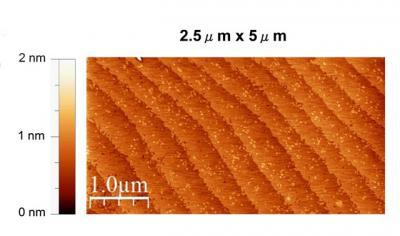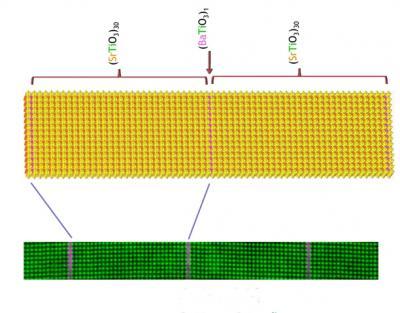You learned in high school that light has a dual nature - it exists as both waves and photons. It is this duality of light that enables the coherent transport of photons in lasers.
Physicists know that, at the atomic-scale, sound has the same dual nature, existing as both waves and quasi-particles known as phonons. Knowing that, phonon-based lasers have also been in development since the first functioning laser was created in 1960, with limited success.
Arun Majumdar, VP for Energy at Google, and Ramamoorthy Ramesh, a senior scientist with Berkeley Lab's Materials Sciences Division, led a team that has provided the first "unambiguous demonstration" of the coherent transport of phonons - phonons underwent particle-to-wave crossovers in superlattices of perovskite oxides.
Unlike elementary particles such as electrons and photons, whose wave nature and coherent properties are well-established, experimental demonstration of coherent wave-like properties of phonons has been limited. This is because phonons are not true particles, but the collective vibrations of atoms in a crystal lattice that can be quantized as if they were particles. However, understanding the coherent wave nature of phonons is of fundamental importance to thermoelectrics, materials that can convert heat into electricity, or electricity into heat, which represent a potentially huge source of clean, green energy.
Superlattices are artificial periodic structures consisting of two dissimilar semiconductors in alternating layers a few nanometers thick. For this demonstration, the collaboration synthesized high-quality superlattices of electrically insulating perovskite oxides on various single-crystal oxide substrates.
Interface densities in these superlattices were
systematically varied using two different epitaxial growth techniques. Thermal conductivity was measured as a function of interface density.

Surface topography of a 200 nanometer thick strontium titanate/ calcium titanate superlattice film on a strontium titanate substrate. Image courtesy of Berkeley Lab
"Our observations open up new opportunities for studying the wave-like nature of phonons, particularly phonon interference effects," says Ramesh. "Such research should have potential applications in thermoelectrics and thermal management, and in the long run could help the development of phonon lasers."
"Lower thermal conductivity is one of the keys to improving the efficiency of thermoelectric materials and the key to thermal conductivity in semiconductors is phonon transport," Majumdar says. "Nanostructures such as superlattices are the ideal model systems for the study of phonon transport, particularly the wave-particle crossover, because the wavelength of the most relevant phonons are in the range of one to 10 nanometers."
Capitalizing on the wave behavior of phonons should enable new advances in new heat transfer applications, the collaborators say. Furthermore, perovskite superlattice-based heterostructures could also serve as basic building blocks for the development of lasers in which beams of coherent phonons rather than coherent photons are emitted. Phonon lasers could provide advanced ultrasound imaging or highly accurate measuring devices, among other possibilities.

Electron microscopy-spectroscopy images of a strontium titanate/barium titanate superlattice film reveal the presence of atomically sharp interfaces with minimal intermixing. Superlattice is color-coded with strontium (orange) barium (purple) and titanium (green). Image courtesy of Berkeley Lab




Comments